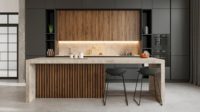Jeff Valles: The fast follower model
If a similar showroom opened in your market, would it make a sound?

My takeaway from the barrage of stories analyzing the Reddit group that banded together to create noise in the stock industry is that this time, the group hit the market at the right time with the right story and, it seems, most of the people walked away with a profit. All have digitally patted each other on the back. All are anxious for the next stock swarming. All the while, the inevitable truth is waiting to pounce: If one simply continues to follow, failure will eventually reach out and control the day.
We all know that adage, “There is no sure thing.” If you survived the jump once, there is no guarantee you will again. There is only so much space on the top of the opportunity pyramid. And that space is especially small on the top of a pyramid depicting a premium market and is truly reserved for the consistently innovative.
Fast following versus staying unique
Multi-line, multi-business, multi market focused companies such as plumbing supply houses, can very easily slip in this fast follower mode. Our businesses are so widely diverse, it is almost impossible to be great at everything, and the premium, luxury showroom business is in a world all its own. Today’s management only has so much time to learn, investigate, implement and evaluate changes or additions. So, we look to learn from our competitors.
You know we need to stay current. You are concerned your showroom will be left in dust as competitors offer new services, products or programs. Being a fast follower can be a viable showroom model. It has its weaknesses and these weaknesses increase as the target market increases in wealth. If your showroom embraces a fast follower strategy and it becomes its primary source innovation, it can become so encompassing that successful brands lose the ability to internally create new, unique offerings of their own. The company becomes so focused on the other guys that they lose a sense of their brand and what initially made the brand unique.
Once a brand looses its market uniqueness, it can only discern itself by price. Then the flywheel shifts from neutral into reverse. Those enacting a copy and paste showroom strategy will continue to see margins decrease until it either closes or wakes up and hopes it can right the ship.
Obediently following a black-and-white fast follower strategy will eventually lead to a face-plant.
This business model of fast following versus a brand staking out its own path is prevalent in many industries; the decorative plumbing industry is no different. Take a moment and envision a popular faucet model. Now, in 90 seconds, name all of the “similar” looking faucets currently available are on display in your showroom. I understand some manufacturers offer unique finishes or more coordinating products or better service. Do you really need them all? Did you add them because a few quotes came in with that brand listed?
It seems so much safer to implement changes that have been vetted by your competition, but great brands venture on their own individually, creating new paths that work to build a unique brand in a crowded marketplace. Will you make mistakes? Absolutely. You will also create compelling deliverables that will set your showroom apart from the other supermarket showrooms.
Implementing unique and intriguing paths will force your competitors to follow your lead. Your target market customers will look forward to visiting your showroom to discover what is new and what is better.
Secondly, by offering unique and popular deliverables, you will avoid pricing wars and your bottom line will increase. You will introduce new vendors and products that only you distribute. Bidding wars will slip to a secondary concern.
However, if you believe this process carries too much risk, fast following is the next best and safest path for your multi-channel business brand. But it cannot be a simple process: See, note and implement. The keys to consistently benefiting from a fast following is to learn from the best. Not just copy them.
A process for success
If you discover something that looks to be successful, dissect it first. Discover its weaknesses, ponder how it will align with your showroom culture and discover where you can make it better for your brand and your target customer. To my knowledge, there are very few inventions on this planet that are being implemented today that cannot and will not be improved tomorrow. So, take a moment and get to know your new discovery and make it yours.
Start by writing down their showrooms’ opportunities and weaknesses. Then prioritize the two lists by evaluating each weakness and opportunity value to your showrooms’ future. With the ranked list staring back at you, clear your mind and start to write down any and all ideas to address the top three opportunities and the top three weaknesses. Next, select the ones you will bring to your team. The next steps are dissecting this with your team, discover the ideas and weaknesses, discuss how they will align with your showroom culture and discover where you can make your idea better for your brand and your target customer.
The key is not to simply do X because it is my idea, or I overheard it worked over there. If it is not designed for your business, it could very well do more harm than good.
Good ideation is a grind, and they lead to market supremacy.
Face plants lead to physical pain and monetary nightmares.
Looking for a reprint of this article?
From high-res PDFs to custom plaques, order your copy today!





